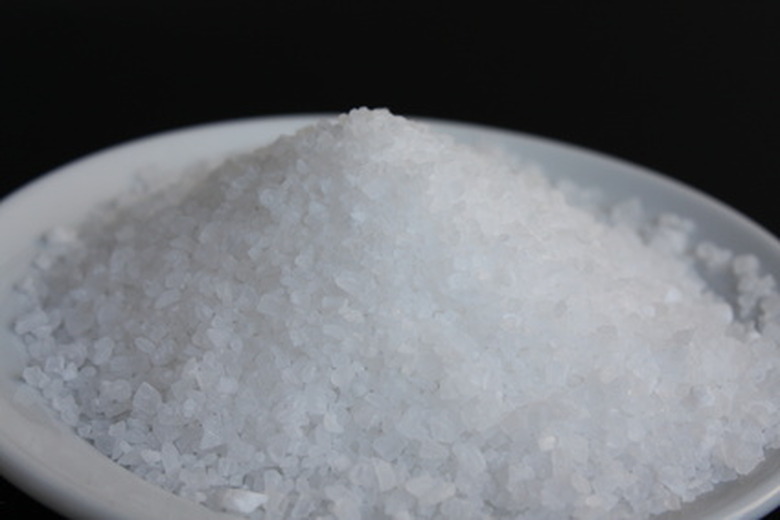Sugar & Salt Crystal Science Projects
Though sugar and salt look like twins, they are different in many ways, including how they react to different elements and how they cause other things to behave. Performed under adult supervision, there are many cool, educational experiments for science classes, scouting troops or just for fun, all proving that these look-alike substances are different in more ways than just taste.
Water Reactions
Water Reactions
This simple experiment observes the different ways sugar and salt react to water. Pour one teaspoon of sugar into a clear plastic cup and one teaspoon of salt to an identical cup. Add 1/3 cup of warm water to each, stir for 10 seconds and wait 3 minutes. The sugar will form a sticky foam, while the salt will not react at all. Another easy experiment is to test the evaporation rate of water when salt or sugar is added. Fill three glasses with 3/4 cup of water. Add 3/4 cup of salt to one glass, 3/4 cup of sugar to another and leave the third glass alone. Place all three in a well-ventilated area and compare the evaporation rate of pure water, salt water and sugar water.
Cell Changes
Cell Changes
This two-part experiment uses sugar-filled raisins and salted potatoes to study the way cells move water. Place a spoonful of raisins into a jar and fill it with water, noting that the raisins look small and hard. Observe the raisins after they have soaked for 3 hours and see that they have turned puffy and swollen. This is because the natural sugar in their cells have absorbed water, or caused it to move. For part two, take two peeled and uncooked potatoes and note that both feel hard and solid. Cut them into chunks and put an equal number into two bowls of water. Stir a teaspoon of salt into one bowl and leave the other bowl filled with only water. Compare the potatoes after they have soaked for 2 hours. The ones in unsalted water will feel unchanged, but the ones in the salted water will feel soft and and rubbery. This is because the salt water caused them to lose cells, which changed their texture.
Crystal Formations
Crystal Formations
This is another two-part experiment and examines the different ways salt and sugar form crystals. To make salt crystals, fill a jar half full with tap water. Add noniodized salt, starting with 2 tablespoons and continuing to add until the salt starts collecting in the water instead of dissolving. Create sugar crystals by pouring 2 cups of water into a saucepan and heating it to a boil. Add 4 cups of granulated sugar and stir until the water is clear. Allow the solution to cool and pour it into a jar. For both salt and sugar crystals, tie string around a pencil and lay over the jar openings, making sure the string length ends just above the water's surface. Set the jars someplace where they will be undisturbed for several weeks and watch as crystals form, marking differences and similarities in size, growth rate and formation. Adding food coloring will make the project more interesting. While the salt crystals are not edible, the sugar crystals will yield sweet, homemade rock candy!
Cite This Article
MLA
Morton, Donna G.. "Sugar & Salt Crystal Science Projects" sciencing.com, https://www.sciencing.com/sugar-salt-crystal-science-projects-6076312/. 24 April 2017.
APA
Morton, Donna G.. (2017, April 24). Sugar & Salt Crystal Science Projects. sciencing.com. Retrieved from https://www.sciencing.com/sugar-salt-crystal-science-projects-6076312/
Chicago
Morton, Donna G.. Sugar & Salt Crystal Science Projects last modified August 30, 2022. https://www.sciencing.com/sugar-salt-crystal-science-projects-6076312/
